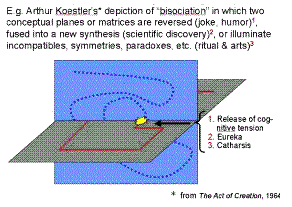Quick notes on intelligent intelligence, 1
[ by Charles Cameron — I do believe this will be a new series ]
.
**
Intelligence, obviously, can mean something along the lines of bright thinking, but also that which is gathered, usually from the extremities of empire or the most hidden of an opponent’s or ally’s secret secrets — but for my purposes here it means the frst of these (the “intelligent” of my title) as applied in the mind of military, analytic or civilian leadership to the second (my title’s “intelligence” by which I mean “intel”).
**
David Barno and Nora Bensahel, Six Ways to Fix the Army’s Culture:
The Army should also reinstate the requirement for every career officer to develop skills in two specialties, rather than to focus narrowly on one. This would produce officers with a much broader range of talents, who would be educated and then employed effectively across more than one skill to support the Army’s disparate needs. These measures would help rising Army leaders think more creatively about the wide range of challenges facing the Army and contribute more effectively at the strategic level within the Department of Defense or the wider interagency arena.
I’d like to make this more explicit. Not only does the development of skills in two specialties mean that an officer can handle two dofferent kinds of problem set with greater assurance, it also and specfically opens the possibility of cross-fertilization between the two disciplines, in those places where they overlap not on the surface level but at the level of analogy and pattern.
When Barno and Bensahel say the development of skills in two specialties “would help rising Army leaders think more creatively” it’s not just that they’d be better informed and brighter than they would be with only one such skill, and it’s not just that they could handle issues involving the overlap between specialties (and I actually don’t just mean military specialties like “Transportation officer (88A)” and “Chemical, Biological, Radiological and Nuclear officer (74A)” but also realms like cutural anthropology, topology, systems dynamics, art history), it’s that analogies would leap to mind showing that allow insights from one realm, discipline, silo or specialty to illuminate another. As shown in Arthur Koestler‘s image in The Act of Creation, which I never tire of posting:
**
Hey, I’ll follow up immediately with related commentary — on a quote from the eccentric, brilliant mind of a British fellow, Geoffrey Pyke, recently memorialized in Henry Hemming‘s book, The Ingenious Mr. Pyke: Inventor, Fugitive, Spy.





September 7th, 2016 at 8:04 pm
Okay, a quick example of “dual-discipline creativity” that I just ran across, in The enigma machine takes a quantum leap:
Once you start looking, these “dual-discipline” insightz crop up all over..